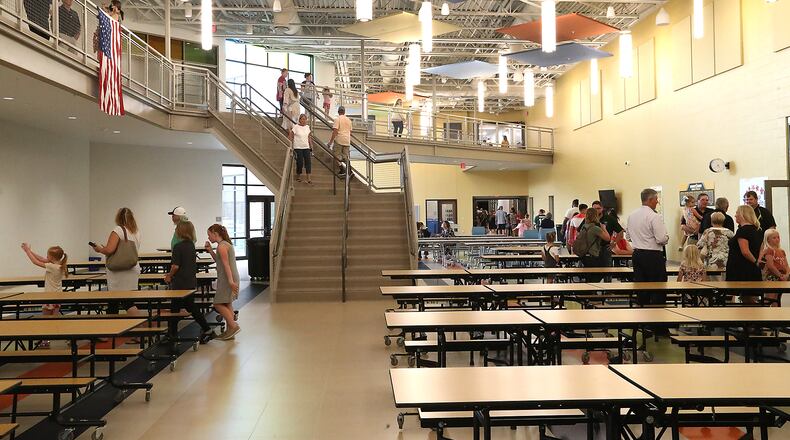The government suspended the application process for the income-based subsidy because of the coronavirus pandemic. The USDA offered free meals to students for the 2021-22 school year through the National School Lunch Program (NSLP), Seamless Summer Option (SSO), but that waiver was not extended for the upcoming school year.
So families will once again need to fill out the free and reduced-price school meal applications for children to be eligible for free or reduced-price lunches during the 2022-23 school year. The applications let districts know whether fees can be waived.
The free meals were an important benefit to help meet the needs of students and families, said Brian Kuhn, Clark-Shawnee Local School District Superintendent.
“By ensuring students had access to school meals at no cost, hunger became less of a barrier for students as they accessed their instructional programs,” he said. “Additionally, families facing financial challenges as a result of the pandemic had the ability to ensure their children could receive nutritious meals at schools.”
As an educator, Kuhn saw students directly benefit from free meals over the last two years.
“It is important for families who believe they may qualify for free or reduced lunch to fill out the application for the upcoming school year. This application is required on an annual basis and some families may not have applied during the last two years given the federal program,” he added.
Superintendents from Greenon and Southeastern local schools echoed Kuhn, saying it was a great benefit and unfortunate it’s ending.
“Studies have shown the link between meals, good nutrition and students’ ability to learn in the classroom. The program supported this. It is unfortunate that it is ending,” Southeastern Superintendent David Shea said.
This comes as a lot of programs that were implemented as a result of the pandemic and the immediate economic impacts that followed are now going away, said Tyra Jackson, executive director of Second Harvest Food Bank that serves residents in counties such as Clark and Champaign.
But the need has not gone away, especially as many grapple with rising food costs due to inflation. Many are paying more for some common food products, which can cause an economic burden. That has increased pressure on Ohio food banks, which are also grappling with inflation, said Jackson.
“So we are seeing a bit of an increase of people seeking assistance and we anticipate that it is going to get higher,” Jackson said, noting that during the summer months when schools are out, parents have to provide additional meals such as breakfast or lunch that would normally be offered by schools during the school year.
Though the number of people being served by Second Harvest on an annual basis is down compared to the midst of the pandemic, it is still up 25% to 30% when compared to 2019, Jackson said.
Urbana schools will continue its breakfast program for all students, but Superintendent Charles Thiel said the free lunch program was great for families.
“The program was great for our students and families to have free lunches the past two years. I had hope that the benefits of the program would have been recognized and it could have continued,” he said.
At Springfield, students will not be affected by the end of this program, Hill said. The district has participated in the Community Eligibility Program through the USDA for nearly 20 years and will continue to participate in it for the 2022-23 school year. This program offers students free breakfast and lunch, regardless of their family’s income level.
Applications for the free or reduced price school meal applications can be found on the school district websites.
The NSLP is normally the nation’s largest food assistance program, operating in nearly 100,000 public and nonprofit private schools and residential childcare institutions, according to the USDA.
In 2020, NSLP participation averaged 22.6 million children each school day, totaling $10.4 billion. In 2019, the average was 29.6 million children at a total of $14.2 billion.
“These declines are attributable to disruptions in the program’s operations in the second half of 2020 due to the coronavirus pandemic, which forced the closure of many schools and childcare institutions. In response to these disruptions and to meet rising food needs during the pandemic, USDA issues waivers allowing for flexibilities in the implementation of the NSLP and expanding the scope and coverage of the program’s SSO,” the USDA stated.
Overall, 3.2 billion meals were served in 2020 through the NSLP or SSO, which was 33.4% less than in 2019. Also in 2020, 76.9% of all meals were free or at a reduced price, a 2.7% increase than in 2019.
The Food and Nutrition Service (FNS) administers the NSLP and reimburses participating schools and institutions for the meals they serve to students. Those from household with incomes at or below 130% of the Federal poverty line can receive a free lunch; between 130- and 185% can receive a reduce-price lunch; and above 185% can receive a low-cost full-price lunch, according to the USDA.


